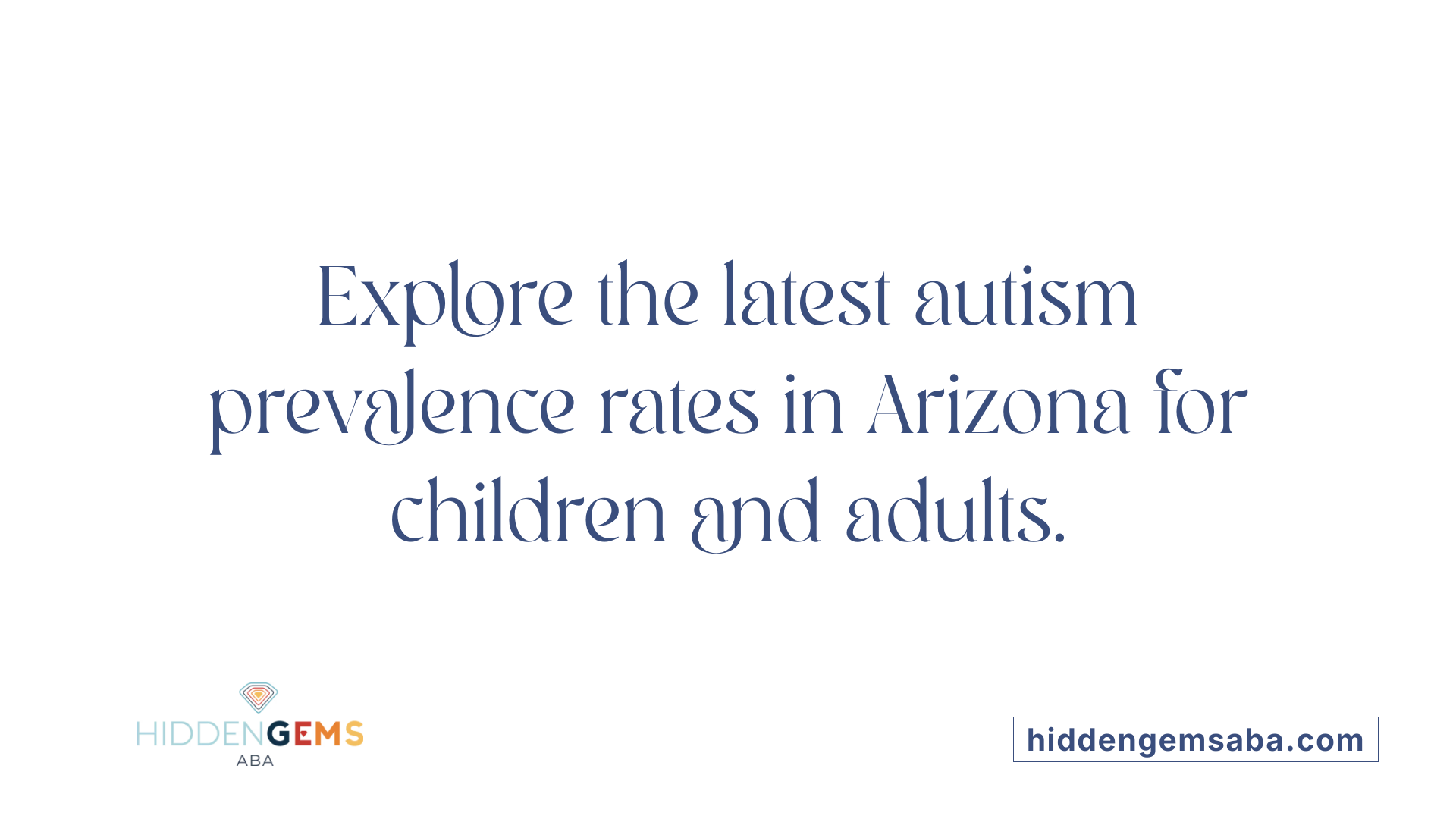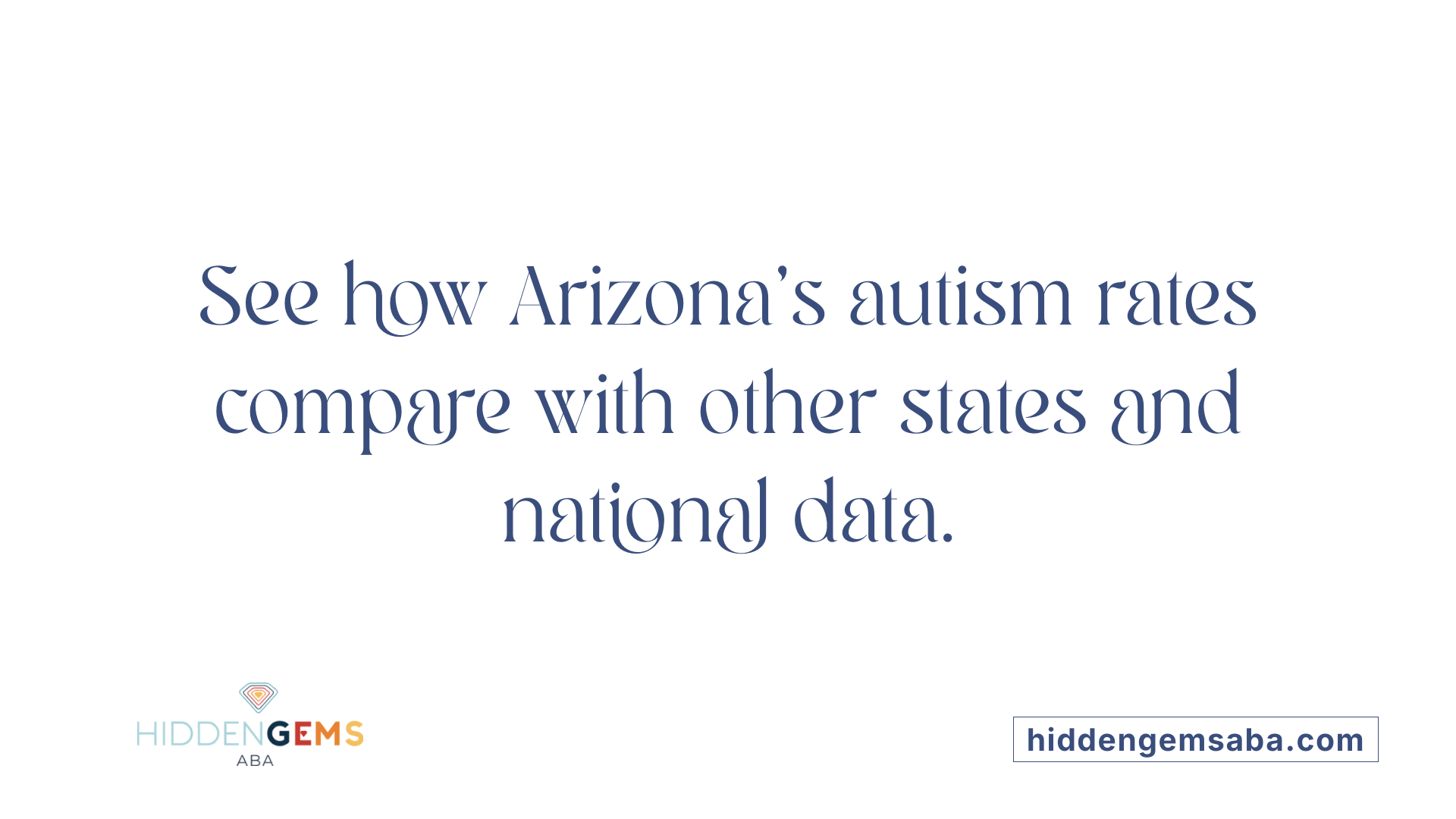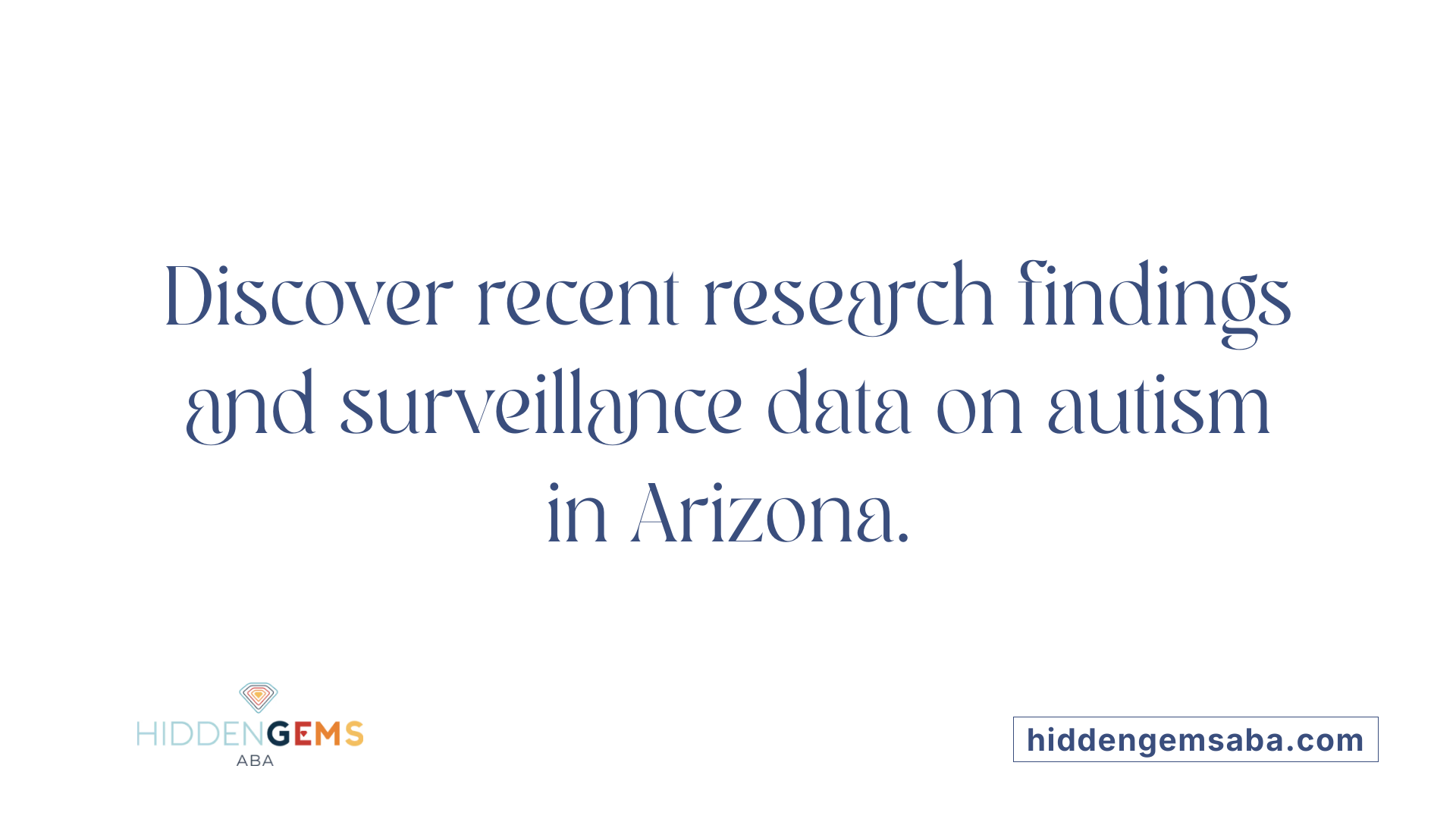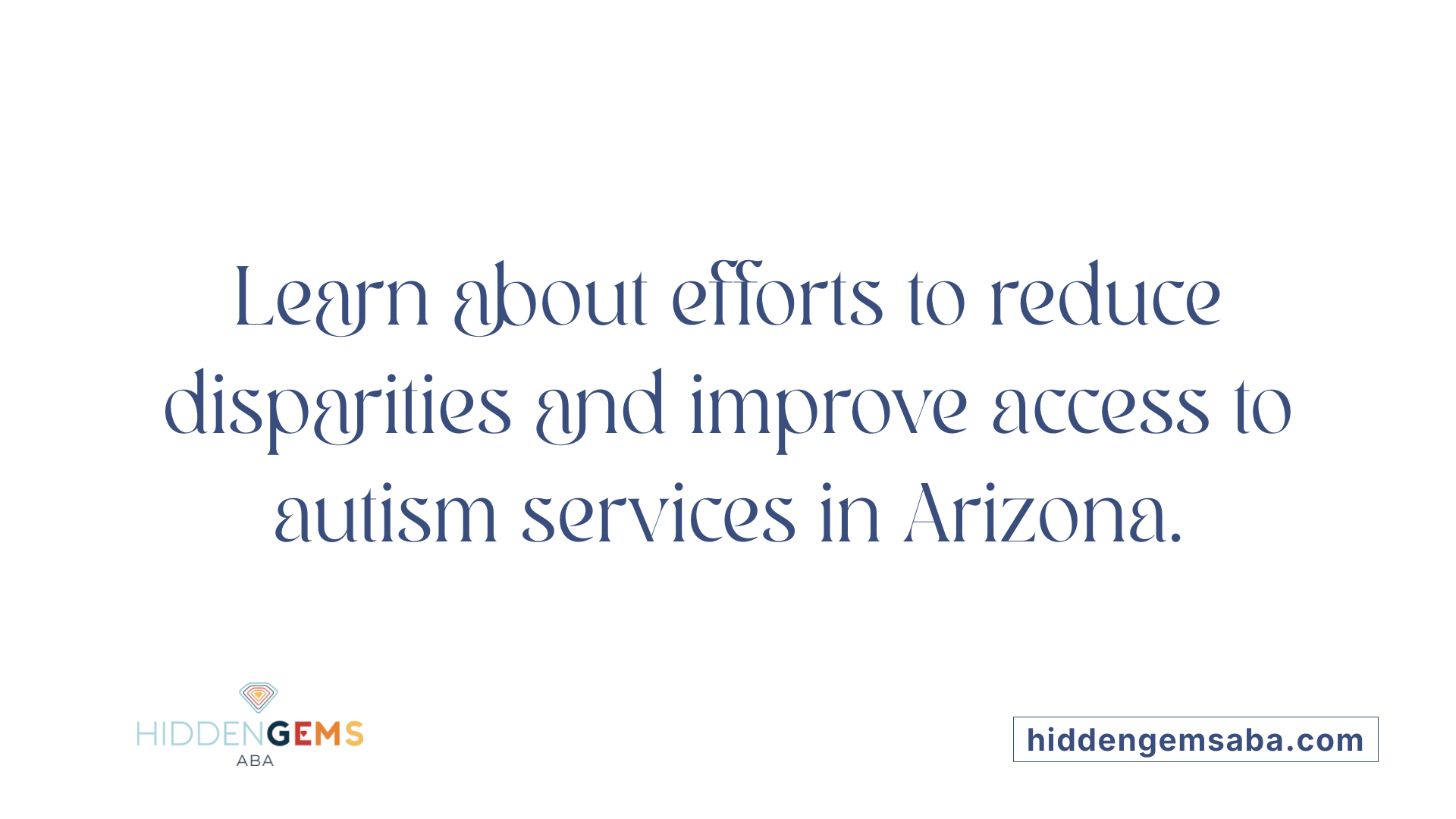Understanding the Trends and Disparities
Recent data reveals a notable increase in autism spectrum disorder (ASD) diagnosis in Arizona, reflecting national trends and highlighting ongoing challenges and opportunities in detection, service access, and research. This article explores current prevalence rates, recent trends, disparities among populations, and efforts to improve outcomes and equity across the state.
Current Autism Prevalence Rates in Arizona

What are the current prevalence rates of autism in Arizona?
In 2020, approximately 1 in 36 children aged 8 years in Arizona have been diagnosed with autism spectrum disorder (ASD). This corresponds to about 2.7% of children in that age group, which is similar to the national estimate of 1 in 36 children across the U.S. for the same year. For younger children, such as 4-year-olds, the prevalence in Arizona is around 1 in 64 children, or about 1.56%, indicating a slightly lower rate compared to older children.
These figures point to a steady pattern of ASD diagnosis in Arizona, aligning closely with national data. Despite variations among different populations, the overall trend shows that autism prevalence continues to rise, partly due to improved detection and awareness.
Beyond children, there are also estimates concerning adults. It is believed that approximately 119,924 adults aged 18 to 84 in Arizona live with ASD, which translates to an adult prevalence of roughly 2.29%.
Overall, the current data suggest that Arizona's autism prevalence is comparable to that of the broader United States, with ongoing efforts focused on early detection, providing necessary services, and understanding the evolving diagnostic landscape.
Recent Trends and Changes in Autism Diagnosis in Arizona

How have autism diagnosis rates changed in Arizona over recent years?
Recent data show that autism diagnoses in Arizona are rising. This trend aligns with national patterns of increasing autism prevalence. A notable example is the establishment of the Autism Spectrum Disorder (ASD) Advisory Committee in 2015, which aimed to improve autism services and policies statewide.
Surveillance reports now indicate that approximately 1 in 31 eight-year-olds in Arizona have been diagnosed with ASD. This is a significant increase compared to past years and highlights a growing awareness and recognition of autism among healthcare providers and families.
Factors contributing to this rise include better awareness about autism, advances in diagnostic practices, and expanded access to early intervention programs like AzEIP (Arizona Early Intervention Program). These efforts have led to more children being identified and receiving necessary support.
Overall, Arizona has seen a considerable focus on improving autism diagnosis and support, reflected in the rising prevalence numbers and ongoing initiatives aimed at addressing the needs of children with ASD.
| Year Range | Estimated Prevalence | Change Over Time | Contributing Factors |
|---|---|---|---|
| 2000-2004 | Increasing but not statistically significant | About 26% increase | Improved detection and awareness |
| Recent Years | 1 in 31 (8-year-olds) | Notable rise | Better diagnostic practices, outreach |
Comparative Analysis of Autism Prevalence Across States and Regions

How does autism prevalence in Arizona compare with other regions or states?
Arizona’s autism rate stands at approximately 1 in 36 children, which is in line with the national average across the United States. This means that for every 36 children in Arizona, one is diagnosed with autism spectrum disorder (ASD).
When we look at other states, some have reported higher prevalence rates. For example, California reported an autism prevalence of about 4.5% among 8-year-olds in 2018, which is notably higher than Arizona's rate.
Despite these differences, overall diagnosis trends show an increase across the country, including Arizona. Nonetheless, Arizona’s prevalence remains consistent with broader national trends rather than surpassing them.
It's worth noting that autism diagnoses occur across all racial, ethnic, and socioeconomic groups within Arizona. The prevalence tends to be higher in boys, which is a pattern observed nationwide. Although data specific to Arizona’s comparison with other states is somewhat limited, current information suggests that Arizona’s autism rates are similar to most regions, reflecting a national pattern of rising diagnoses.
Data and Research Insights on Autism in Arizona
 Recent data and reports reveal that autism spectrum disorder (ASD) prevalence in Arizona has been on the rise, mirroring national trends. According to the CDC's Autism and Developmental Disabilities Monitoring Network, in 2022, about 1 in 31 eight-year-old children in Arizona were diagnosed with autism. This reflects an ongoing increase, as the rate was significantly lower in the year 2000, when approximately 1 in 150 children were diagnosed.
Recent data and reports reveal that autism spectrum disorder (ASD) prevalence in Arizona has been on the rise, mirroring national trends. According to the CDC's Autism and Developmental Disabilities Monitoring Network, in 2022, about 1 in 31 eight-year-old children in Arizona were diagnosed with autism. This reflects an ongoing increase, as the rate was significantly lower in the year 2000, when approximately 1 in 150 children were diagnosed.
On the adult front, recent estimates from 2017 suggest that about 2.29% of adults aged 18–84 in Arizona, roughly 119,924 individuals, are living with ASD. These figures are sourced from state health agencies and national surveillance programs, providing a comprehensive picture of how autism diagnoses are evolving.
Improvements in screening and diagnostic techniques have played a major role in these increasing numbers. Over time, increased awareness, better detection methods, and broader screening programs have contributed to more children and adults being identified with autism. Although some of this rise may stem from improved recognition rather than a true increase in prevalence, ongoing studies suggest prevalence is genuinely increasing in various parts of Arizona.
Overall, these insights highlight the importance of continuous surveillance to understand the dynamic landscape of ASD. The ongoing trend underscores the need for expanded access to diagnostic and support services, especially for underserved populations in rural or Native American communities.
| Data Type | Population Area | Prevalence Rate | Notes |
|---|---|---|---|
| Child (2022) | Eight-year-olds in Arizona | 1 in 31 | Increased from 1 in 150 in 2000 |
| Adult (2017) | General population | 2.29% | Roughly 119,924 adults diagnosed |
| Overall (2021) | Arizona | 1.08% | Slightly below national average |
| Native American children | Arizona | Less likely to be diagnosed | 13% less likely than other groups |
These figures underscore both the increasing awareness of autism in Arizona and the disparities that still need addressing, particularly regarding access to diagnostic services and early intervention.
Factors Influencing the Rise in Autism Prevalence in Arizona
What factors may contribute to the rise in autism prevalence in Arizona?
The increase in autism spectrum disorder (ASD) diagnoses in Arizona can be attributed to several interconnected factors. Improved awareness among parents, educators, and healthcare providers has led to more children being screened and diagnosed early, often around age 2. Advances in diagnostic techniques and broader access to specialized healthcare, such as developmental-behavioral pediatricians and autism specialists, play a significant role in identifying more cases.
Environmental factors are also being studied, with ongoing research exploring whether pollution, chemical exposures, or other environmental changes contribute to ASD prevalence. Demographic shifts, such as population growth and diversity, influence the data as well.
Furthermore, policy changes and education initiatives have enhanced screening protocols, making detection more consistent across different communities. Despite the increase, disparities remain—Native American children, particularly those in remote areas, are less likely to be diagnosed, highlighting ongoing challenges.
In summary, the rising prevalence in Arizona results from a combination of improved detection methods, increased awareness, potential environmental influences, and demographic variations. Continuous surveillance and research are essential to fully understand these contributing factors and address disparities.
Addressing Disparities and Enhancing Access in Arizona’s Autism Services

What disparities exist in autism diagnoses and access to services in Arizona?
In Arizona, significant differences influence autism diagnosis rates and access to support services across various communities. Native American children, especially those living in remote rural and reservation areas, are less likely to be diagnosed with autism spectrum disorder (ASD), largely due to limited local access to specialized healthcare providers. Despite overall higher prevalence rates—approximately 1 in 63 children in Arizona are estimated to have ASD—racial and ethnic disparities persist.
Research indicates that white children in Arizona are about 1.5 times more likely to receive an autism diagnosis compared to children from minority groups. Sociodemographic factors such as income level, cultural perceptions, and geographical isolation contribute to these gaps. Access challenges are further exacerbated by a concentration of developmental-behavioral pediatricians and autism specialists in urban centers, leaving many children in rural and Indigenous communities without timely diagnostic services.
Efforts are underway to address these disparities. Telehealth collaborations have been introduced to bridge the geographic divide, allowing children in remote areas to undergo evaluations and receive support remotely. Community organizations, including the Autism Society of Greater Phoenix, also play a vital role by advocating for increased resources, awareness, and inclusion initiatives. These combined efforts aim to promote equitable access to autism diagnosis and services across all communities within Arizona, ensuring that no child is left behind due to socioeconomic or geographic barriers.
Looking Ahead: Continued Progress and Challenges
Arizona's increasing autism prevalence reflects a complex interplay of improved detection, demographic factors, and healthcare disparities. While progress is evident through statewide initiatives and research, persistent disparities—particularly among Native American and rural populations—require ongoing attention and tailored interventions. Continued surveillance, community engagement, and innovative service delivery models like telehealth will be vital to ensuring equitable access and support for all individuals with autism, now and into the future.
References
- Autism rates increase in U.S. and AZ
- Increasing Diagnostic Services for Autism Spectrum Disorder ...
- Changes in autism spectrum disorder prevalence in 4 ...
- Facts & Statistics
- Rates of Autism Climb to New Highs in the U.S., With ...
- Resources for Members with Autism Spectrum Disorder ...
- Autism Society of Southern Arizona: Home
- Facts & Statistics
- A Snapshot of Autism Spectrum Disorder in - Arizona






